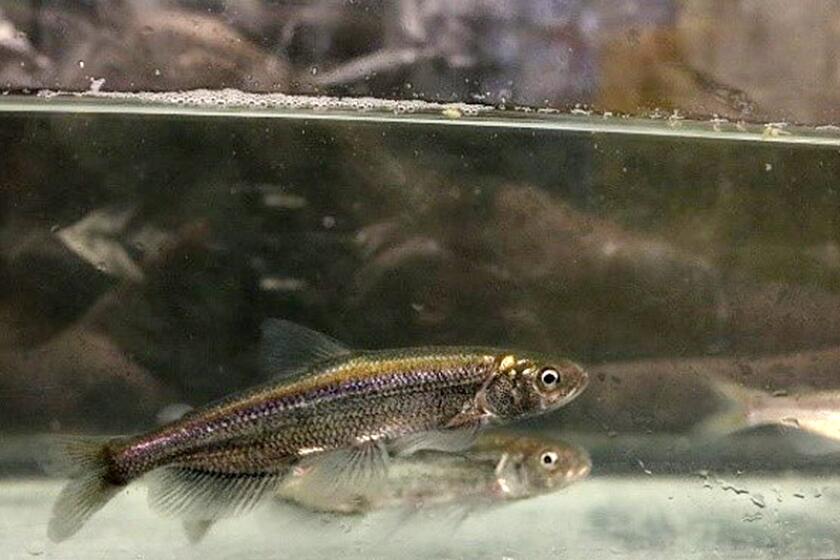BREEDING BIRDS: BLACK PHOEBE, SAY’S PHOEBE
- Share via
BLACK PHOEBE
(Sayornis nigricans)
SAY’S PHEOBE
(Sayornis saya)
Description: The black phoebe has a black head, upperparts and breast, with a white belly. The Say’s phoebe is grayish-brown above, with a tawny belly. The Say’s phoebe is slightly larger than the black phoebe.
Habitat: The black phoebe is common in woodlands, parks and suburbs, while the Say’s pheobe is found in dry, open areas, perching on bushes, boulders and fences. Both birds, but especially the black phoebe, prefer to nest near water.
Diet: Both birds sally from their perch on short flights to capture flying insects, a feeding technique called “hawking.”
Display: Both species frequently pump and spread their tails. In courtship, the male black phoebe performs a song flight of fluttering and calling, then slowly descends.
Nest: The black phoebe builds a nest of mud pellets, plant fibers and hair; the Say’s phoebe builds one of grass and other plant materials and fibers. Both build their nests on cliffs and other vertical surfaces and line them with hair and other fine materials.
Eggs: The eggs of both birds are white, generally unmarked, and slightly less than an inch long.
Natural history notes: Both birds are members of the flycatcher family (Tyrannidae). Other locally-breeding flycatchers include the Cassin’s kingbird, the western kingbird and the ash-throated flycatcher.
Breeding bird atlas: To report bird breeding activity in your neighborhood, or to get information on the breeding bird atlas (now in its fifth and final year), call Sea and Sage Audubon Society members Sylvia Gallagher, (714) 962-8990, or Nancy Kenyon, (714) 786-3160.
Note: Maps are divided into 5-kilometer squares so that Audubon Society volunteers can more easily survey areas on a regular basis.
Sources: Sea and Sage Audubon Society; “The Birder’s Handbook,” Ehrlich, Dobkin and Wheye, Fireside Books (1988); “Field Guide to the Birds of North America,” National Geographic Society (1987); “Birds of Southern California: Status and Distribution,” Garrett and Dunn, Los Angeles Audubon Society (1981).
Indicates 5-kilometer-square areas where breeding activity has been confirmed.
DR, RUSS ARASMITH / Los Angeles Times
More to Read
Sign up for The Wild
We’ll help you find the best places to hike, bike and run, as well as the perfect silent spots for meditation and yoga.
You may occasionally receive promotional content from the Los Angeles Times.




